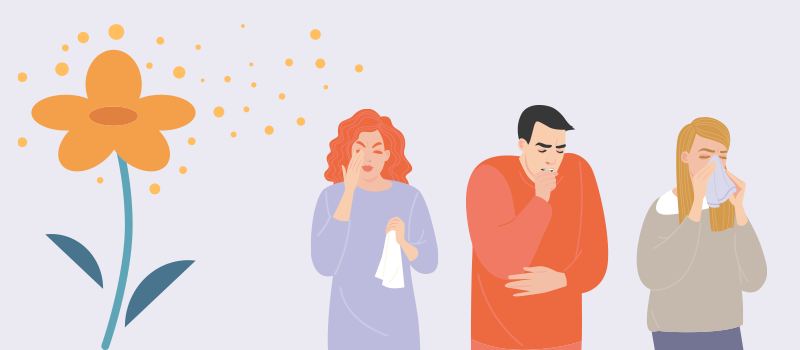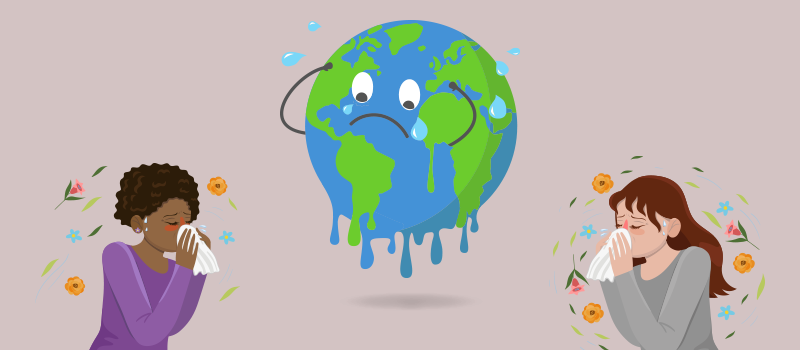What’s the Buzz
The Bee Healthy Blog
Spring Allergies vs. a Cold

The symptoms of seasonal allergies and colds can be very similar, often making it difficult to tell them apart. According to the Mayo Clinic, common colds are caused by viruses, while seasonal allergies are immune system responses triggered by exposure to allergens, such as seasonal tree or grass pollens. Both can cause a runny nose, sneezing, possible headaches, and congestion. Luckily, there are signs that make it possible to tell the difference if your symptoms are contagious or just a sign that spring is in the air.
Cold or allergies?
The common cold often includes special “bonus” symptoms that allergies rarely deliver, like a cough, sore throat, and sometimes aches and pains. Seasonal allergies, on the other hand, can cause itchy or watery eyes and soreness behind the front of the skull, which is unusual in the common cold. People who live in rural, pollen-laden areas or who get hay fever may experience these symptoms more severely. Still, the differences can be very minor. The following are a few more concrete methods of telling the difference between cold and allergies.
- Genetics: Studies have found that 30% of children develop allergies if one of their parents has them. If both parents are prone to allergy symptoms, that number skyrockets to 70%. In addition to genetic predisposition, take note that most children rarely develop allergies until they are around five years old or later. Some may develop allergies as young as four. If your child is three or younger, they likely have a cold.
- Season: Winter is the prime season for catching a cold, whereas pollen saturates the air during the spring and summer. Take note of whether or not you develop symptoms at the same time each year. An annual occurrence usually signifies allergies.
- Mucus: A stuffy nose with yellow and green-colored mucus usually points to cold symptoms. Allergies typically produce clear nasal drips. If a runny nose starts clear and becomes yellow-green after a few days, you may be developing a sinus infection.
How Colds and Allergies Affect Your Body
Viruses invade your body and then rapidly multiply to start colds. The immune system attacks them causing congestion, coughing, and sometimes a sore throat. The immune system engages in a battle against the virus, so cold symptoms are typically more severe than allergies, and may cause more severe headaches, fever, and muscle aches and pains.
Allergies, on the other hand, are caused by the immune system overreacting to some stimulus. Pollen, certain food chemicals, dust, sawdust, pet dander, and more can cause the immune system to act up and produce allergy symptoms. This is why people with allergies take antihistamines because histamines are the chemicals that cause a runny nose, watery eyes, and sneezing.
While it can be hard to tell the difference between colds and allergies, it’s important to know the difference so you can stay home, rest, and avoid spreading contagious germs to those around you. If you seem to get sick around the same time each year, talk to your doctor about the possibility of allergy medications. It’s important to first determine if your symptoms represent allergies or a cold.











SOCIAL